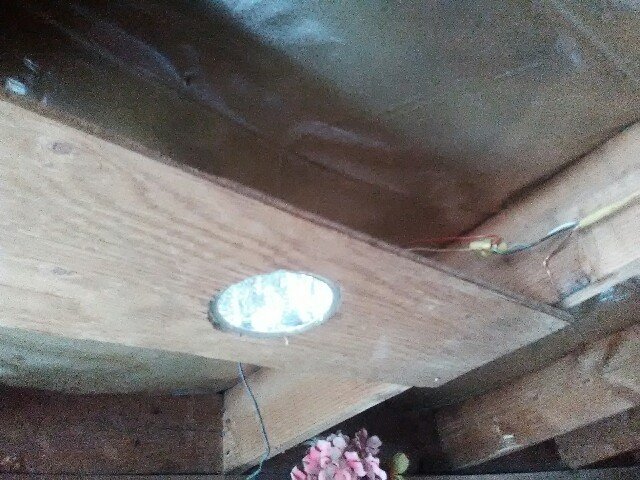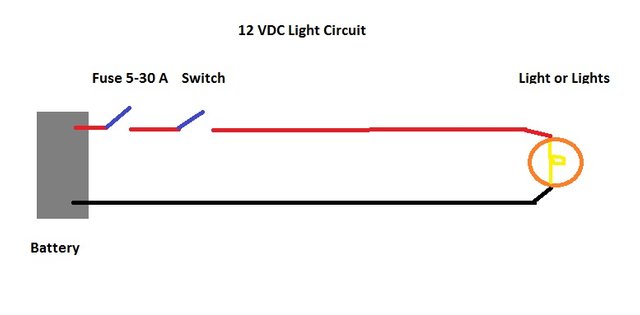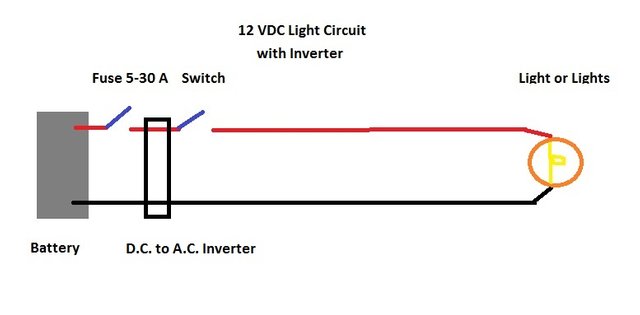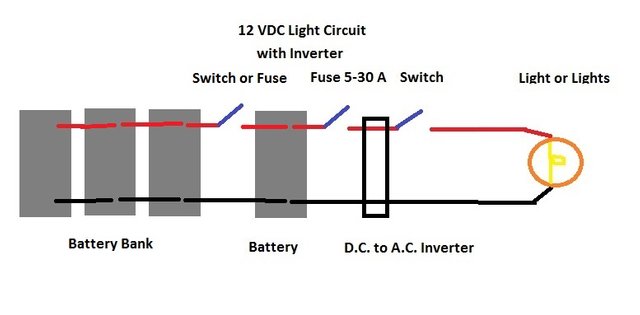How to Live Off-Grid Cheaply - Lighting - Part Seven
Written for Steemit: A guide to how I built my own system and live off-grid because there is no other alternative where I live using wind and solar green energy ©Jeff 2017 All Rights Reserved.
How to Live Off-Grid Cheaply: Lighting - Part Seven

Many people do not know this but lighting, especially with incandescent lighting uses one-third of all the electricity we consume. In short, lights cost a lot. In some ways LED, (Light Emitting Diodes) lighting reduces the use of electricity but people have used massive numbers of LED so the electricity used can be the same.
If you are off-grid, believe it or not there are plenty of ways to make your own lights. If you have a twelve volt D.C. system, you can actually use lights for semi-trucks that are available at a truck stop to light your house. The light you see in the picture is one I made years ago. It is a forty LED reverse light and costs about $50.
The interesting thing about this is that you can use Romex, Rope, residential wiring cables and residential A.C. switches and boxes to control your lights. If you decide to do something like this, there are several different truck lights that are white LED and you can use your regular house wiring that is in place. Just hook the circuits up to a battery and Voila!
Twelve volt LED lights are very efficient. The battery does not need to be charged as often as the rest of the system. In fact, the lights in my house ran for months, almost a year, off one car battery without charging. I even used a 'Dead' battery for the longest time that wasn't good for anything else. The lights still worked. I only lit the house up at night but still. Think about it.
This is all you need to make or change a lighting circuit 12 VDC:
- Battery
- An inline fuse for each circuit from the positive battery terminal to the lighting hot or black wire.
- A single gang box
- A 15 amp A.C. switch
- 1 or many lights.
- Material such as wood, metal, or plastic to mount the light

Unlike A.C. which can cause fires, your fused D.C. won't cause a fire. Oh, I suppose it is possible but the current is so low that it would have to be a worst case scenario.
So, that is one advantage and the other is it is fairly hard to get shocked and killed by the D.C. circuit, there just isn't enough juice. D.C. lighting is kid safe.
Of course, you can also use any residential approved A.C. lighting but you must hook it up to an inverter.
There are smaller D.C. to A.C. inverters you can use such as something purchased at a store like Walmart, KMart, or an auto parts store that are usually about $20.00 or so. The nice part about putting your lights on a separate circuit is that your whole battery bank will not be run down if someone leaves the lights on and forgets, plus you only lose one battery, not your whole bank. With an inverter, you must have a good battery that outputs enough voltage within the tolerances of the inverter.
Each inverter manufacturer tolerances may differ a little bit but they are usually between 11.5 and 15.5 so make sure you check. And that is another thing, when appliances turn on with their surge, if you have a separate battery lighting circuit your lights will not blink or go out.
Again, with an inverter you can use any light available for residential use just make sure you use LED bulbs. So here is a circuit with an inverter:

How many lights can you put on one circuit? A lot, ever see a big rig with lots of light chicken rolling down the freeway?
One or two circuits with LED lights, especially if they are all 12 volt d.c. might be enough for your whole house. A.C. LED lights must convert the A.C. to D.C. so a little bit is wasted.
How big of a separate inverter do you need? Generally, it won't be very large. The larger the inverter you choose the more electricity it consumes to change the D.C. to A.C. so get one as small as possible for efficiency, with a little bit extra.
Smaller A.C. to D.C. inverters come available in sizes from 50 to 800 watts.
Here is the circuit so that you can charge your lighting battery from your battery bank but keep it separate an inline fuse is sufficient. You could even have and inline fuse at 15 to 20 amps plus a regular residential switch. Notice that when hooked up to the battery bank only the Negative or black wire is permanent and grounded. You can also use a dedicated solar panel to charge the battery, a fifteen watt is usually enough.

That's it. Hope you enjoyed it. While writing this I came up with a new vertical windmill design with no transmission and a few other things I might put on later, like a Tesla coil that captures atmospheric cosmic energy, or thermocouples. One I thought of while writing this was a piece of copper pipe filled with melted lead. They could be made by melting the lead on the stove and would last forever.
Good luck!
Table of Contents - Other Parts
Follow me: @jeff-kubitz and thank you for your upvote
I very much like putting lights on a separate circuit.
Especially now with LEDs so commonly available.
Getting rid of inverter is one of the nicest things.
An inverter will drain the battery all by itself.
Just sitting there doing nothing, the inverter seems to drain the battery even faster. (It is looking for a load)
Home Depot and Lowes have 12V LED lights now too.
Look for the ones that have a little wall-wart with them. You can hook them up (with a fuse) straight to a big battery.
Thanks for your compliment. So Home Depot has 12 vdc LED now too? Great! I am getting some. Maybe they have not made it to our nearest store yet
The ones I am speaking of are in an area with puck lights and such.
A smallish area, that is easy to miss.
My Homey Depot even has LED lights that look like shop lights, but better and brighter, but they are wired for 110V AC, and have not taken them apart to see what can be adapted. They have a long plastic tube with a PCB with about a dozen ultrabright LEDs soldered to it.
They have those solar power motion sensor LED security lights for 39.99 to 79.99. Those are in the outdoor security lights and have a battery w/ small panel. We have also tried those pucks here. There are okay but the adhesive does not last long